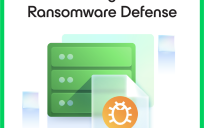![]()
Right now, federal employees are confronting the Long Term Care (LTCFEDs) decision. This decision involves choosing between the following:
- Paying a drastically higher premium to continue their current LTCFEDS coverage
- Paying the same premium amount for a reduced benefit
- Paying a lower premium amount for a greater reduction in benefits
- Paying nothing and only keeping a tiny paid-up LTC benefit.
This decision needs to be made by Sept. 30, 2016. This is a tough decision.
Here are five things to bear in mind when you approach this decision:
- If you need long term care, what will the cost be? Here are a couple of good resources to help you forecast LTC expenses.
- For those who end up needing Long Term Care, the average care will last for three years. See here: http://longtermcare.gov/the-basics/how-much-care-will-you-need/ .
- The cost of care will depend on the state where you receive the care. This calculator can help you do the math: http://www.aarp.org/relationships/caregiving-resource-center/LTCC.html
You will want to see if your current coverage was sufficient. Perhaps you needed more or less coverage than what your current policy allows.
2. The LTCFEDS option of paying a drastically higher premium to continue their current LTCFEDS coverage is challenging, but at least you have coverage. Dropping the coverage will leave you exposed. This is a personal risk assessment. No advisor can tell you how much risk you should feel comfortable with.
3. The LTCFEDS option of paying nothing anymore and only keeping a tiny paid-up LTC benefit is unfortunate. The paid-up benefit is roughly equal to the total premiums the enrollee had already paid toward that policy. Had OPM/LTCFEDS returned the premiums, that would’ve made life simpler because then you can invest that money and potentially have more coverage in the future. The paid-up policy coverage will not increase with inflation, thus with each passing year it becomes less valuable – just the opposite of an investment.
4. Use the value of time: You will want to ask yourself, “Will I ever reach a point where I can self-insure?” Meaning, even if you don’t have sufficient assets today to cover an LTC event, but perhaps many years from now you will have sufficient assets. Your TSP, your IRA, your home equity — all those can appreciate immensely over the next 10, 20 or 30 years.
5. A “middle-of-the-road” strategy would be to pay less for a reduced benefit and allowing your other resources to pick up the slack. The most costly element of your LTC policy is the inflation protection, which will protect you many years from now. But many years from now you may have sufficient assets. If you do anticipate your assets increasing, you may “feel better” knowing that even if you opt for a reduced LTC policy, that may not be a problem because hopefully your assets can make up the difference.
These last two points are examples of self-insuring. Yes, with self-insurance, you assume some or all of the risk, but you also save yourself the cost of insurance premiums. Those saved premiums can be invested, be used for future LTC needs if they ever arise, and any leftover funds remain for your family.
I hope this helps. I’d be happy to help you through the thinking process!
Stephen Zelcer is part of the GovLoop Featured Blogger program, where we feature blog posts by government voices from all across the country (and world!). To see more Featured Blogger posts, click here.





Leave a Reply
You must be logged in to post a comment.